Top 5 Best Handheld Gaming Devices In 2024
You no longer require a desktop or laptop to experience the best PC games. The top PC gaming handhelds we’ve tested provide the capabilities of a full-size computer in a conveniently portable package.
Handheld PC gaming devices offer the power and versatility of a complete computer in a compact form factor that’s easy to carry. While this category isn’t entirely new, the Steam Deck played a significant role in bringing it into the mainstream in 2022. Anticipate the emergence of more diverse devices in the future, but as of now, these are our preferred choices.
Deeper Dive: Our Top Tested Picks
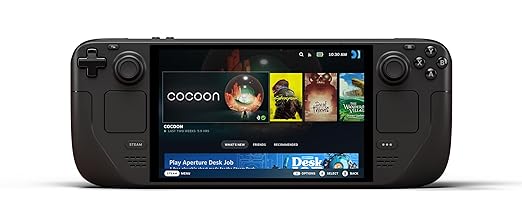
1: Valve Steam Deck OLED
Best Overall
Why We Picked It
As of now, the Steam Deck remains the leading handheld gaming PC, and Valve has enhanced its appeal with a refreshed model. The device boasts a stunning 720p OLED display (7.4 inches), ensuring that games look their best with vibrant colors. Stealth improvements include an extended battery life, providing an extra one to four hours of usage compared to the original model, along with significantly faster download speeds, two to three times quicker.
Who It’s For
For those interested in exploring PC gaming, the Linux-based SteamOS offers a user-friendly interface, prominently featuring the Steam store and its extensive library. To enhance the experience, consider getting Valve’s official Steam Deck Dock, which provides additional benefits such as simplified firmware updates and the capability to output to a screen without requiring a power supply.
Pros
- Fantastic OLED screen
- Improved battery
- Faster downloads
- Runs quietly
- Excellent emulation support
Cons
- Can barely handle the latest AAA releases
- Anti-glare screen only available for highest tier model
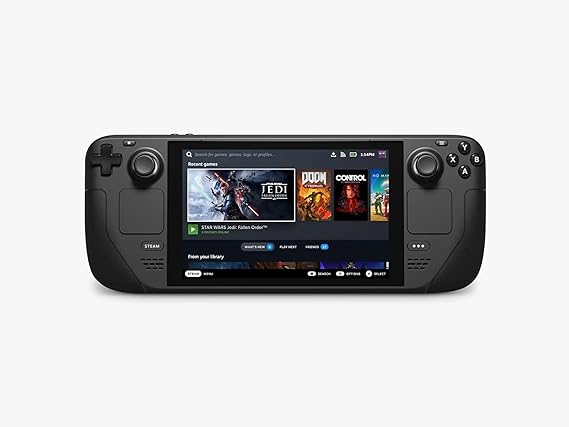
2: Valve Steam Deck
Best Entry-Level Steam Deck
Why We Picked It
The original Steam Deck remains an impressive gaming machine, featuring specifications nearly identical to the newer OLED model. Its 7-inch LCD screen maintains a resolution of 1,280 by 800 pixels, though it lacks the Wi-Fi 6E download speeds and may have slightly reduced battery life depending on the game. However, the standout feature is its price, which is notably lower than that of the OLED version.
Who It’s For
The original Steam Deck is currently only offered as a base-level model, making it an ideal choice for those wanting to explore this category. Notably, it now comes with 256GB of internal storage, a substantial increase from the initial 64GB capacity introduced before the OLED model’s launch. This enhancement provides users with more value for their investment.
Pros
- Powerful for its size
- Steam games run consistently well
- Terrific retro game emulation
- Dock compatibility adds TV and monitor support
- Full Linux desktop environment
- Cool LAN file transfers
Cons
- Single USB-C port limits connection options
- Unwieldy for a portable gaming system
- Game mods require lots of tinkering
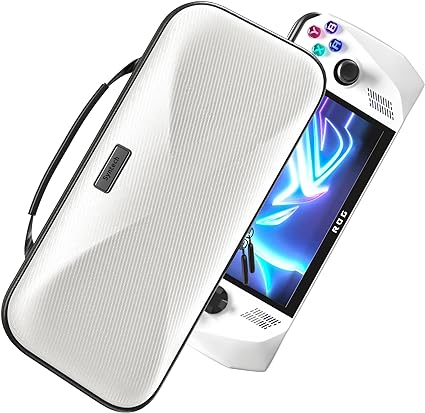
3: Asus ROG Ally
Best for Windows-Based Gaming
Why We Picked It
The Asus ROG Ally is a high-end, Windows 11-powered portable device, boasting a stunning 7-inch, 1080p/120Hz screen and robust specifications tailored for handling high resolutions. However, the significant power it offers comes at a price – it provides just one hour of Cyberpunk 2077 gaming when not connected to a power source.
Who It’s For
For those accustomed to Windows gaming, navigating a full desktop interface on the go can be challenging. Recognizing this, Asus provides the optional Armoury Crate interface, streamlining your games into a single, user-friendly menu. Whether you opt for the standard interface or the Armoury Crate, the Ally ensures portable, full HD access to a wide range of PC gaming marketplaces.
Pros
- Attractive 1080p 120Hz display
- Slick design and sturdy build
- Steady performance in most gaming scenarios
- Runs full Windows 11
- Decent battery life outside of gaming
- Asus software changes modes and remaps controls on the fly
Cons
- Many games require lower graphics settings for smooth performance
- Super short battery life while gaming
- Some finicky controls, particularly for navigating Windows
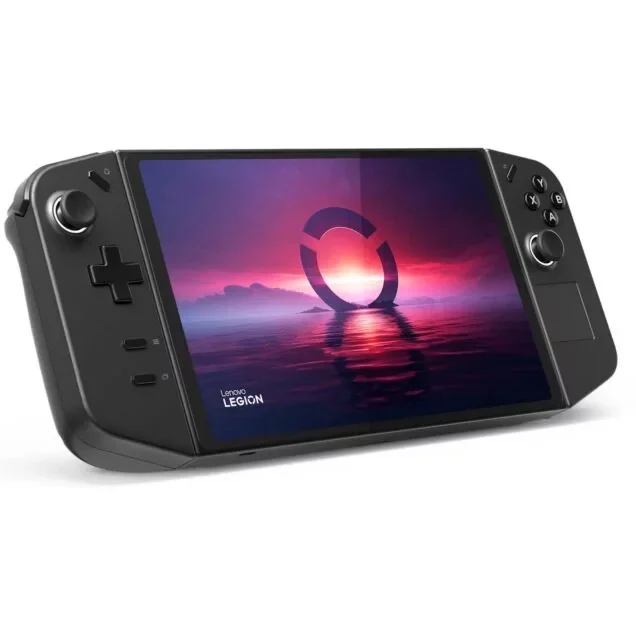
4: Lenovo Legion Go
Best Design
Why We Picked It
The Lenovo Legion Go distinguishes itself with its oversized design, featuring an 8.8-inch QHD screen. Notably, it comes equipped with detachable Nintendo Switch-style controllers and includes an FPS mode that transforms the right controller into an ergonomic mouse for enhanced gaming functionality.
Who It’s For
The Lenovo Legion Go appeals to gamers who appreciate innovation. With its substantial design, this handheld gaming PC showcases more creativity than seen in other devices of its kind. While not all of its flashy features may seamlessly come together in practice, the experimentation embodied by the Legion Go represents a step toward innovation in the realm of handheld gaming PCs.
Pros
- Gorgeous 8.8-inch QHD screen
- Steady performance with many AAA games
- Runs full Windows 11
- Two USB-C ports
- Included carrying case
Cons
- Buggy Legion Space software
- Gaming at QHD rarely worth it
- FPS mode is clunky
- Detaching controllers is awkward
- Heavy
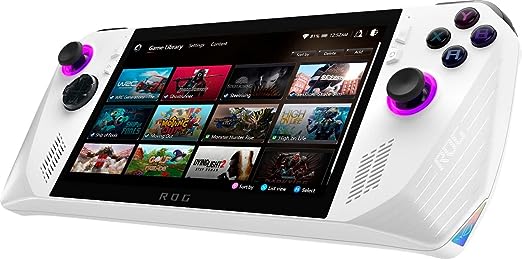
5: Asus ROG Ally (Z1)
Best Entry-Level ROG Ally
Why We Picked It
The Asus ROG Ally Z1 is a more budget-friendly and less powerful version of the Ally, offering considerable cost savings. Despite being less powerful, it still has the capability to run fairly demanding games. It maintains attractive features such as a 7-inch, 1080p screen and runs on the full Windows 11 operating system. This model reflects the familiar concept in PC gaming of having multiple hardware tiers at different price points to cater to diverse needs, a positive trend that extends into the handheld space.
Who It’s For
The Asus ROG Ally Z1 is ideal for gamers seeking a more budget-friendly option and are willing to trade some power to achieve that. In testing, Assassin’s Creed Valhalla ran at 29 frames per second on the ROG Ally Z1 (1080p, medium settings), in contrast to 43fps on the more powerful model with the same settings. This trade-off can be a reasonable compromise for those looking to save money on their gaming device.
Pros
- Cheaper than Z1 Extreme model
- Attractive 1080p 120Hz display
- Slick design and lightweight build
- Runs full Windows 11
- Asus software improves game library navigation
- Long battery life (outside of gaming)
Cons
- $100 savings tough to justify
- Battery life remains short while gaming
- Finicky controls, particularly for navigating Windows
How Powerful Are Handheld PC Gaming Devices?
The power of handheld PC gaming devices varies, but they generally aim to deliver performance comparable to mid-range or high-end gaming laptops or desktops. Key factors influencing their power include the CPU, GPU, RAM, and storage capacity. These devices typically feature robust processors, dedicated graphics cards, sufficient RAM, and SSD storage for fast loading times. Display resolution and refresh rate, as well as battery life, contribute to the overall gaming experience. While there may be a trade-off in performance compared to larger gaming PCs, handheld devices provide a remarkable gaming experience on the go.


